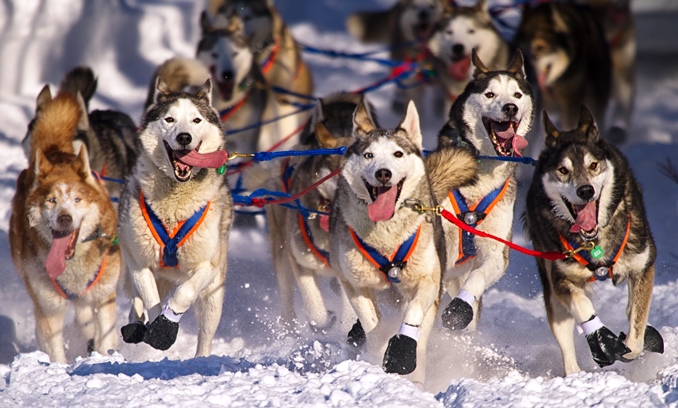Genealogists and anthropologists have long disputed the provenance of domestic dogs (Canis lupus familiaris). Although genetic analyses and fossil evidence indicate that the domestic dog descended from the gray wolf (Canis lupus), the exact location (or locations) and time (or times) of origin for canine domestication are contentious topics. Southeast Asia and Europe have often been noted as early centers for the domestication of dogs, with most researchers assigning a probable range of dates between 15,000 and 32,000 years ago as the time for dog domestication. However, a recent study pinpoints northern Siberia as the origin of the domestication of dogs and estimates that domestication took place approximately 23,000 years ago. Early domesticated dogs later dispersed eastward to the Americas and westward to Eurasia as ancient Siberian peoples migrated away from their original geographic homes. See also: Anthropology; Dogs; Domestication; Fossil; Phylogeny; Zooarcheology

The proposed Siberian origin for canine domestication is based on population genetic analyses of ancient DNA of dogs and humans from Siberia, North America, and Europe. Population genetic data indicate a tight correlation in the population movements of canines and Siberian humans. The ancient peoples who inhabited northern Siberia about 20,000 to 30,000 years ago likely remained isolated for thousands of years as a result of the harsh climate. Unable to travel east or west, ancient Siberians lived in numerous small groups, probably numbering a few dozen people per group. Wolves in Siberia were also confined to the same geographic areas as the Siberian peoples. Proponents of the Siberian dog domestication hypothesis believe that Siberian humans and wolves, being isolated together geographically, began to interact, eventually leading to the domestication of these wild animals. The confinement of humans and wolves in relatively small geographic areas is an important component of the Siberian dog domestication theory. If the Siberian peoples were able to travel widely, they likely would have encountered other populations of wolves, making it harder to establish steady human–wolf relationships that led to domestication over the course of hundreds or thousands of years. Further population genetic data show that domesticated dogs followed their migrating human counterparts when climate conditions moderated (approximately 16,000 years ago). Genetic patterns indicate that early domesticated dogs followed ancient Siberians as they migrated east to the Americas and west to Eurasia. See also: Deoxyribonucleic acid (DNA); DNA and animal domestication; Earliest humans in the Americas; Genetics; Human migration and population analysis; Migratory behavior; Population genetics
Dogs were the first animals to be domesticated by humans, although the process of domestication itself may been unintended. Instead, canine domestication may have been established when the lives of wolves and ancient peoples collided. For example, wild wolves, particularly those with somewhat docile or more-social natures, might have assisted humans in the killing of large prey. On the other hand, wolves might have scavenged carcasses in the vicinity of human habitation, bringing wolves into contact with humans. Once established, the ties between the two groups consolidated, ultimately leading to a relationship in which humans and early domesticated dogs continued to bond more closely. See also: Animal breeding; Social mammals
The Siberian dog domestication hypothesis will require more analyses in order to be verified. Only limited samples of genetic material from ancient dogs and humans have been studied. In particular, the recent analyses were restricted to mitochondrial DNA—that is, extrachromosomal DNA contained in the mitochondrion. This type of DNA traces the maternal line of organisms, constituting only a small fraction of an organism’s genome. For more complete support, nuclear DNA—the DNA contained within each cell nucleus of a eukaryotic organism and which is inherited from both parents—will be needed to confirm the preliminary conclusions regarding the origin of dog domestication in Siberia. See also: Mitochondrial DNA





